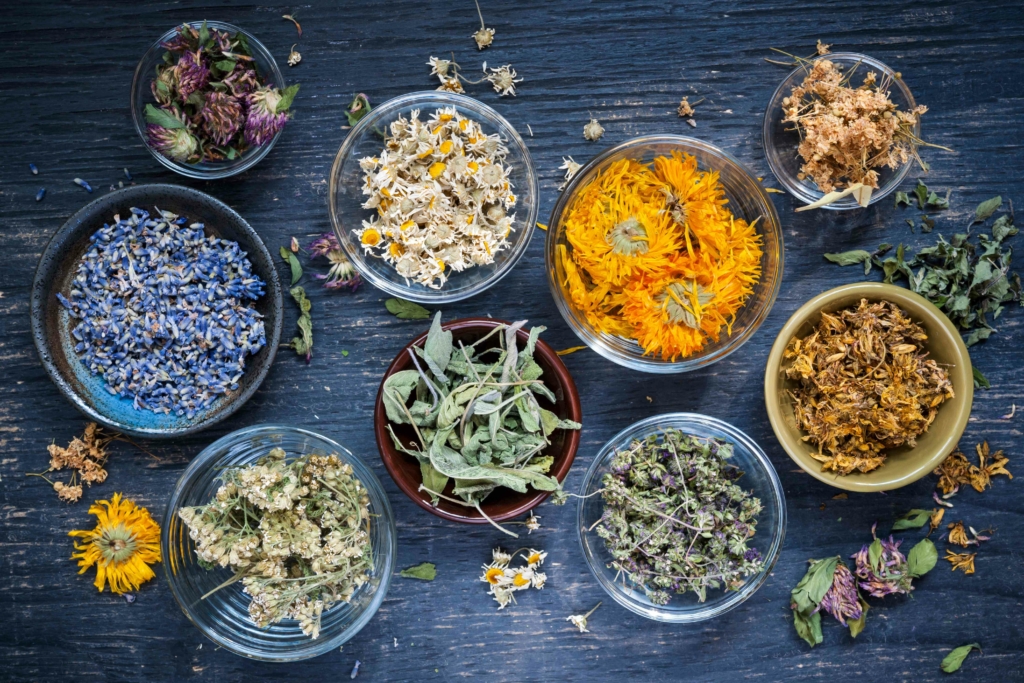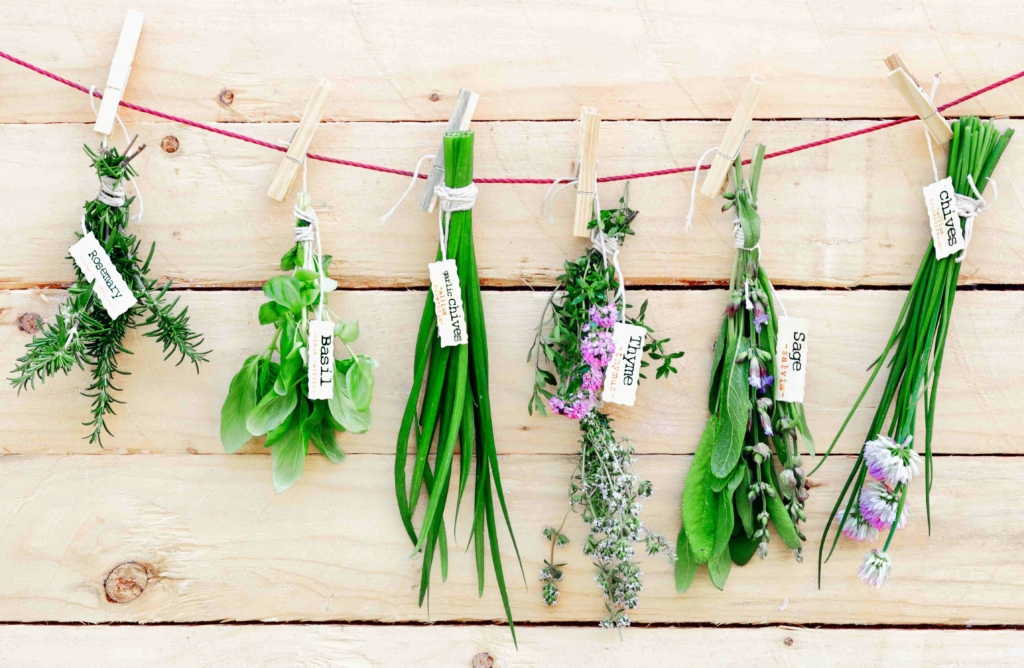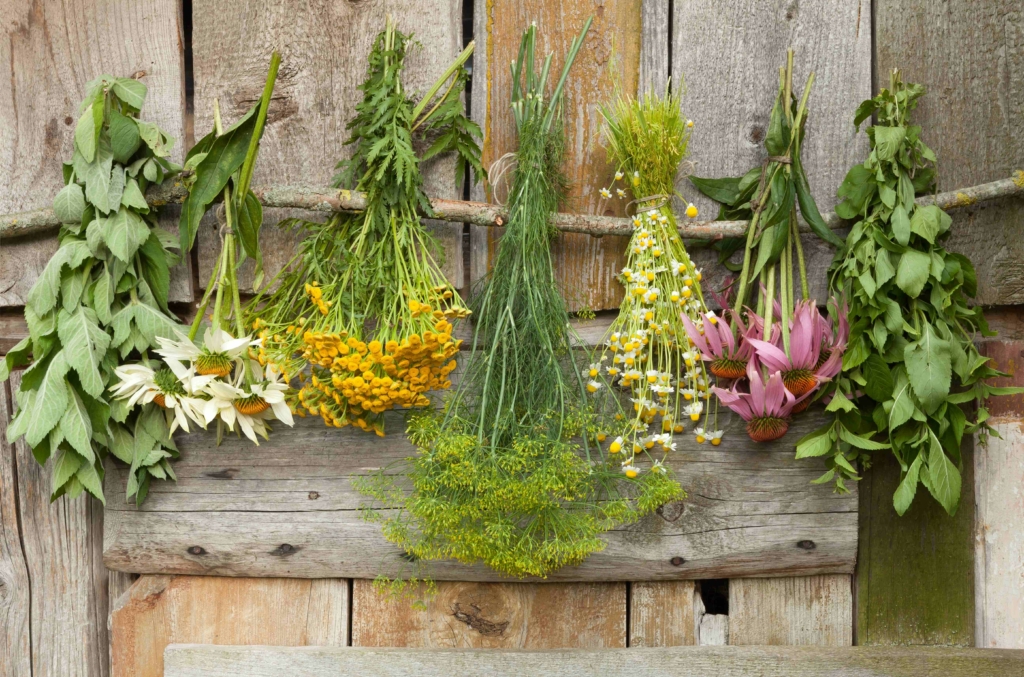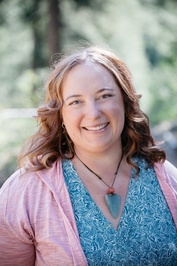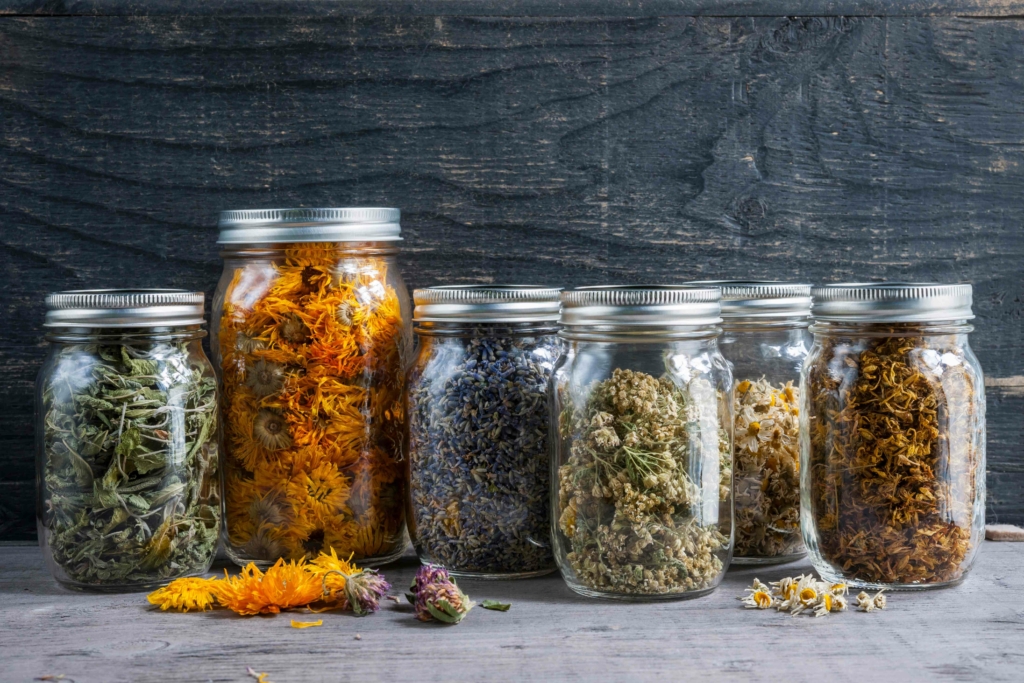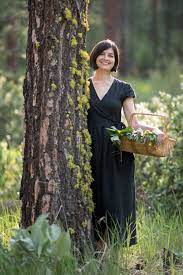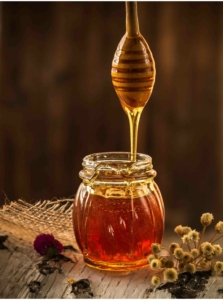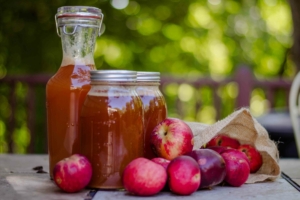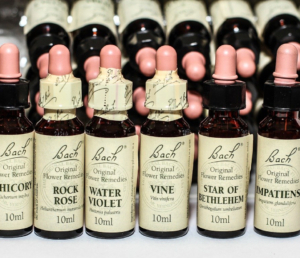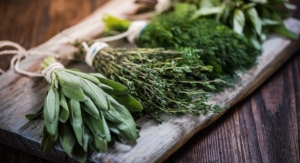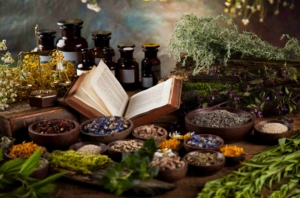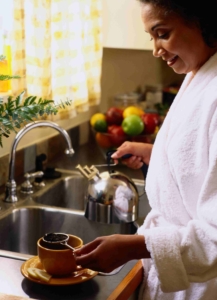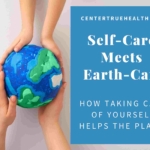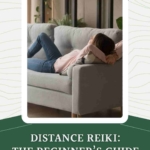 Drinking tea is probably something you’re already familiar with, and I’ll give you some additional suggestions.
Drinking tea is probably something you’re already familiar with, and I’ll give you some additional suggestions.
Infusions, also called herbal teas, are water-based extractions where you steep the herbs in water for a period of time. Tea is most often made with dried herbs; the part of the plant used for tea is usually flowers and leaves. Dried herbs are more easily extracted by the water than fresh herbs. (Though in the summer, I like to do both.)
There are many different preparations and the goal of the tea you’re making is a key consideration. For example, is this something delicious and warming to sip, or are you seeking something more potent for healing? You’ll steep the herbs for a shorter period of time in the first case, and longer in the second.
Personally, I was somewhat dismissive of using tea for healing because it seemed weaker than taking herbs in capsules or tinctures. After starting my herbal training, I now feel quite differently. Drinking tea is one of my favorite ways to incorporate herbs into my daily life, a proactive way to receive the gentle, nourishing benefits of the plants.
Herbal Tea Recipes
Cultivating Gentleness: Heal the Inner Critic & Strengthen Intuition
[related Soul Healing Recording]
Gentle Mind Tea 
Ingredients:
1 part Blue Vervain to calm overwhelm & overthinking
2 part Tulsi to ground/anchor the mind in the body & uplift the spirit
1 part Rose to synchronize the heart & mind
Soul Time Tea
Ingredients:
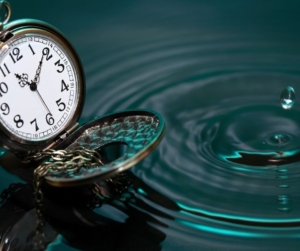 1 part Blue Vervain to release overwhelm and calm the mind
1 part Blue Vervain to release overwhelm and calm the mind
1 part Hawthorn leaves to prioritize what’s most important to your heart
2 parts Oat Tops to nourish and restore the nervous system when overstressed
I love making infusions using more herbs in larger quantities and drinking them over a day or two (just make sure you refrigerate overnight). You can also use it as the base for a morning smoothie (my husband can’t tell, so this is an easy way to get loved ones to use herbs!).
Nourishing Infusion
Restore & Nourish Infusion 
Red Clover and Nettle are mineral rich and gently detoxifying. Stinging Nettle is restorative to the whole body, especially the kidneys, and is incredibly protein-rich. Oats are wonderful for restoring the nervous system and helpful if you’re dealing with anxiety or feeling burned out.
Dried Ingredients:
2 parts Oatstraw
2 parts Red Clover
1 part Milky Oat tops
1 part Nettle
- Put ¾ cup of the dried herbs in a quart-sized mason jar.
- Bring water to a boil and fill mason jar to the top.
- Let steep for 4-8 hours. (You could prepare the night before.)
- Strain and drink throughout the day.
- Bonus: I like to use the same herbs to make a 2nd batch. While the 2nd batch is weaker, I like appreciating the plants’ healing gifts, and taking good care of the earth in this way as well.
Precautions: Do not use Red Clover if on blood thinners as it may enhance their effects. Discontinue 2 weeks before surgery. Check with your doctor if dealing with estrogen-sensitive cancers as there are some inconclusive studies as to Red Clover’s effects on this. You can easily make the infusion without Red Clover.


